Mulligans
General Mulligans
Always consider keeping the cards shown above. The "Hobgoblin" and the "Lady in White” are important to tuck away early. This deck has quite a few low-cost minion cards (which are mostly unexceptional on their own), so I wouldn't worry too much about "fishing" for any specific one. Mulligan priority is roughly as follows: 1) Hobgoblin, 2) Lady in White, 3) Northshire Cleric, 4) Shadow Word: Pain, 5) Shadow Visions, 6) Acolyte of Pain 7), Kazakus. If you suspect that you are playing against an Evolve Shaman, Jade Druid, or Murloc Paladin (or any Hero configuration that relies on 1-cost spells), then look for the “Skulking Geist” as well.
Introductory Remarks:
I happened upon this deck almost by accident. For over a year, I’ve been trying to craft a deck that uses the old “Hobgoblin” card without relying to heavily upon it. The secret, I’ve found, lies in complementing its minion-intensification ability with the strengths of a new card from the “Witchwood” expansion: that being the “Lady in White.” These two cards, matched with the “unique” (or card “anti-duplication”) traits of the “Raza the Chained,” “Reno Jackson,” and “Kazakus” additions, make for a deck that scales nicely as the match progresses. What’s particularly nice about the deck is that it feels nothing like any of the other tiered decks on this website. It appears to take players by surprise, because as usual, people think nothing of cards like “Northshire Cleric” or “Shadow Visions” showing up early in a match (since they often do elsewhere too). However, very quickly, the unexpected happens: otherwise weak minions are augmented and emerge emboldened as they inflict unremitting pain upon the opposing hero.
The “Shadowreaper Anduin” hero card is the cherry atop the hot-fudge sundae, so to speak. I also added the “Archbishop Benedictus” card because I’ve found that late in some close matches and “quickdraw” (or “Mill Deck”) engagements, fatigue-death sometimes becomes a problem. This card mitigates that issue very nicely. I would avoid playing this card before Raza, Reno, or Kazakus, though, since this deck expander often deals duplicates into your deck. On the other hand, playing the archbishop late in the game usually ensures a clean and certain victory.
“Skulking Geist” might be replaceable, especially if your strategy relies upon a more barebones style; Nevertheless, I’ve found that this card adds considerable value to the deck. The “Skulking Geist” serves to whittle down top-tier caster-burn decks (like the “Secret Tempo Mage”) quite nicely. This card is also good against Jade Druids, Evolve Shamans, and Murloc Paladins (since they often rely upon 1-cost spells). You might prefer to replace this with an “Eater of Secrets” or a “Chief Inspector” card if “Secret Decks” are your biggest weakness. Otherwise, the cards in this deck are all custom fitted for one another.
More on Tactics:
I found that tossing back a full mulligan if neither the Hobgoblin nor Lady show up is the soundest initial strategy. The deck has plenty of low cards, so you need not worry about having enough cards to play early in the game. Against early-agro decks, you might instead choose to keep shadow-spell or taunt minions for the first few rounds, but usually this isn’t necessary. Also, if the “Hobgoblin” does show up fairly early, be careful how you play him. Since he is a card people don’t see very often, usually an opponent’s initial curiosity turns to fear (an immediate kill by way of a spell or a hero-minion takedown). I usually wait till after I have lured a few of a hero’s early quick-kill spells out, or simply play a taunt minion (if you are playing against a deck which does not favor quick-kill cards). Usually all you need is one round of relative passivity from your opponent to make the “Hobgoblin” useful enough to serve his purpose. Again, we are not relying too heavily upon the “Hobgoblin,” he only serves as an early play to keep your opponent from feeling too comfortable. When and if the “Hobgoblin” doesn’t show up before your Lady card, simply use your low game cards until one or the other card shows up. Generally speaking, you shouldn’t wait to play your 1-attack minions. Most of the time, there are plenty of them that appear later in the game.
Special Notes on Sequence: As was already stated, always play the archbishop late in the game (preferably after all your anti-duplication cards are used). Also, just like the archbishop, Velen and the Hobgoblin should both be played at the proper time in the match. For Velen, the ideal time to play him is when you are in the heat of your shadowreaper phase, and the opponent has no visible way of killing him in a single round. However, if you are in desperate need of healing, and are not in your shadowreaper phase, perhaps it is best to play Velen before your hero-ability card. And for the Hobgoblin, try to hold off on playing the Lady till after you play the Hobgoblin. Obviously there is nothing you can do if you already played your Lady and the Hobgoblin comes out late. Even in this situation, the Hobgoblin acts as a standard minion (3 cost, 3 attack, and 3 defense), so it’s not really a game changer.
Special Notes on Proper “Kazakus” Usage: Against very-fast agro decks, it’s sometimes critical to choose a level-5 spell, if this is in your hand on your fourth turn. This often-enough gives you a very strong table-turning spell for your next round (like when you need to clear the board, or give yourself some buffer armor). However, usually it’s best to choose a really good level-10 spell, whether this shows up in your hand late in the game, or your opponent is taking it slow and steady. Do not worry about wasting this ability. Occasionally even in late game scenarios I choose a lower-level spell rather than a level-10 spell to complement the cards I played just before it (or intend to play soon thereafter).
Special Notes on Proper “Shadowreaper Anduin” Usage: Try to activate this phase of the game immediately after your opponent chooses to play some 5-attack (or higher) minions. Don’t forget that this card does many things at once (kills minions, gives you armor, and switches the hero ability from healing to damage). I can’t tell you how many times, in my shortsightedness, I became fixated on complicated sequences of preparatory moves (and post-moves) and completely forgot that this card is dangerous if played improperly. After you play it, healing becomes sparser. Also, make sure you have few-to-no 5-attack or higher minions on the board when you play this. Your goal is to defeat your enemy, not help him/her out.
Possible Card Substitutions: The “Stoneskin Gargoyle” would be a wonderful substitution for a 3-cost/1-attack card, like the “Demolisher.” Also, it’s possible to make a few substitutions and transform this into a mech-heavy deck, including the following cards: “Flying Machine,” “Gnomergan Infantry,” and/or “Junkbot.” The “junkbot,” which would benefit somewhat from this mech-heavy deck choice, would be a great substitution for the “Trogg Gloomeater” minion (particularly if you don’t have some of these cards). If you don’t have Velen or Raza, you might want to use the “Obsidian Statue” as a strong replacement. For a missing “Kazakus,” I would try a good mid-cost damage spell (like “Holy Fire”) as a proxy.
Final Notes: This deck is still a work in progress. I’ll probably change out a few cards in the coming weeks/months. Oh, and one last thing. I’m sorry about the dreadful/onerous dust-cost of this deck. I was hoping that those of you who have most of these legendaries already would be interested in trying this out. If you don’t have most of these (or boatloads of dust to kill), then let it simply serve as food for your curiosity. If you have any suggestions, please don’t hesitate to let me know your thoughts on this deck. Happy voidforming, and enjoy the new “Witchwood” addition. Speak to you all again very-very soon.






























/rating_1_on.png)
/rating_2_off.png)
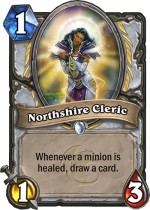
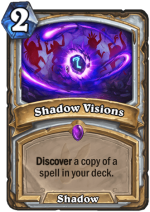
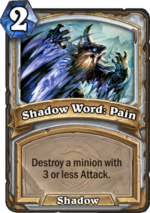
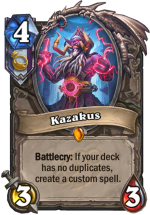
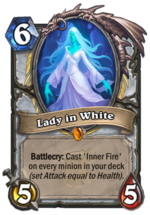
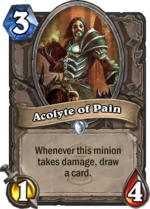
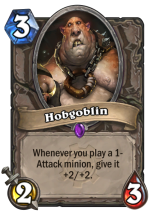
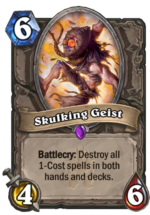
Looks pretty neat and thoughtfully created. Just crafted it and feels like a hole lot of fun! Thank u!